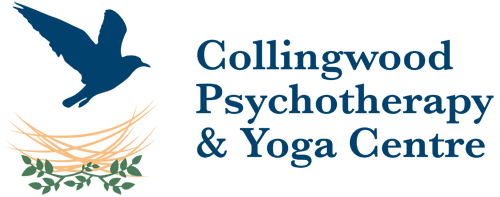Why Healing Feels So Hard—And What to Do About It

By Tara McGee, MSW, RSW, Dip TiRP Psychotherapist, OCSWSSW, IAYT
Healing from trauma isn’t just about feeling better. It’s about becoming someone new—someone freer, more grounded, more connected, and more alive. But if that’s the case, why do so many people struggle to move forward, even when they want to heal?
Because healing isn’t linear. And more importantly, it’s not just about the past—it’s about confronting the parts of us that are afraid of the future.
The Real Reason You’re Stuck
Whether you’re in therapy, working with a coach, doing somatic work or yoga, or walking your own path—there’s often a moment when things stall. Maybe you feel resistance to going deeper. Maybe old habits creep back in. Maybe you stop showing up altogether.
This isn’t laziness. It’s not a flaw. It’s your system protecting you. Change—even positive change—can feel threatening.
Why?
Because real healing changes everything.
When we begin to heal, our relationships may shift. Our priorities might change. We might no longer tolerate environments, people, or patterns that were part of our old, wounded selves. And while that’s liberating, it’s also destabilizing. Some parts of us would rather keep things familiar—even painful—than face the unknown.
What Are the Obstacles to Healing?
Obstacles show up in many forms. In the Comprehensive Resource Model (CRM), and in yogic psychology, these may include:
- Fear of Change: The unknown can feel more terrifying than the trauma we’ve survived.
- Secondary Gains: Sometimes, staying stuck offers unconscious benefits—like safety, dependency, or identity.
- Powerlessness Mindset: Holding onto the belief that we are fundamentally powerless can feel safer than taking risks or responsibility.
- Avoidance & Resistance: We make excuses, miss sessions, dismiss practices, or seek out distractions instead of feeling what needs to be felt.
What may begin as self-protection can become a pattern of chronic disempowerment—where we feel trapped by our circumstances and unable to influence our lives, even when we actually can.
In yogic psychology, these patterns are called antarayah (obstacles to progress) and kleshas (mental afflictions) like fear, attachment, and self-ignorance. These distort our perception and block access to our deeper Self—the part of us that is whole, wise, and capable.
So… What Helps?
Here’s the paradox: the very tools that heal us are often the ones we resist the most. Breath, stillness, presence, therapeutic dialogue, embodiment—all require us to be with what we’ve spent years avoiding.
That’s why both CRM and yoga therapy focus first on building internal resources—a sense of safety, clarity, and support inside ourselves. From there, we begin to unhook from old fears and step into our adult, grounded, sovereign self.
Some strategies that help unblock the healing path:
- Practice consistently, even when it’s hard. (Especially then.)
- Name your fears. Often, just bringing them into awareness starts to soften their hold.
- Work with a therapist or guide who knows how to gently, compassionately challenge the protective parts that keep you stuck.
- Recognize the paradox—you may long to heal and fear it at the same time. That’s normal. It’s human.
The Hero’s Journey
Healing is a hero’s journey. You are not weak for struggling—it means you’re in the thick of transformation. You are forging a new path through fear, self-doubt, old identities, and protective mechanisms that once kept you alive.
The path back to yourself is sacred. It is also messy, surprising, and at times exhausting. But if you keep choosing it—again and again—you’ll begin to experience glimpses of who you really are underneath the pain.
And that’s when the real healing begins.
